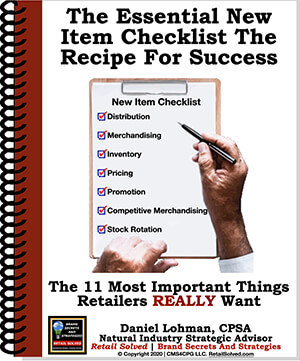Defining the category is one of the most important steps in the category management process. It sets the tone for how the retailer focuses on meeting the needs of it’s shoppers. It can be used to differentiate you from your competition.
The category definitions communicate your commitment to meeting your shopper’s needs. They help improve the shopping experience, making the category more shopper friendly. It can encourage shoppers to purchase complementary items reducing the possibility of shopping the competition while increasing their total register ring, their market basket (the total on their sales recipe at check out).
The challenge is that categories are typically defined by retailers and syndicated data providers based on how they perceive the category, not on how consumers shop the category. Consumers today have a lot of choices when it comes to where and how they spend their hard-earned money. Current outdated category definitions rarely resonate with loyal consumers.
For example, new parents need a lot of supplies for their newborn. They don’t always have a well thought out list when they go shopping. Having complimentary sub-categories merchandised next to each other improves their shopping experience. In this example, the “Baby and Infant Needs Category” would include everything they need including baby food/formula, diapers, wipes, baby lotions and powders, etc.
Brands and retailers can use a “consumer decision tree” to help them properly categorize product assortments in each category. The consumer decision tree highlights the decision-making process consumers make when they enter a category. Consumer decision trees are similar to a flow chart with each level addressing choices shoppers make in the order they make them. For example, a new parent enters the Baby and Infant Needs Category looking for diapers. They then may choose diaper size (newborns), then diaper quality (super premium, premium, economy), then pack size/item count, etc.
Category definitions should be designed around the shopper’s needs or “need states”. Need states focus on how shoppers group or organize, the items on their shopping list to help fill their specific needs. The category encompasses all of the items a parent would need for their new baby or infant. Think of it as a single destination within a store that is consumer-focused on a specific need or need state. This category management strategy is more shopper-friendly and it caters to the needs of the consumer. When done correctly, this strategy can also improve shopper loyalty for both the brand and retailer.
Dan's mission is “Empowering Brands and Raising The Bar”. His weekly newsletter, educational podcast and training courses have become an invaluable resource for brands and retailers seeking a competitive advantage. To learn more or connect with Dan, visit BrandSecretsandStrategies.com or email dan@cms4cpg.com.
©2018 Brand Secrets and Strategies. All rights reserved.

Want A Competitive Edge? The Recipe For Success
New product innovation is the lifeblood of every brand. New products fuel sustainable growth, attract new shoppers and increase brand awareness. Know the critical steps to get your product on more retailer’s shelves and into the hands of more shoppers.
Empowering Brands | Raising The Bar
Ever wish you just had a roadmap? Well, now you do!
Don’t miss out on all of these FREE RESOURCES (strategic downloadable guides, podcast episodes, list of questions you need to be asking, and know the answers to, the weekly newsletter, articles, and tips of the week. You will also receive access to quick and easy online courses that teach you how to get your brand on the shelf, expand distribution, understand what retailers REALLY want, and address your most pressing challenges and questions.
All tools that you can use, AT NO CHARGE TO YOU, to save you valuable time and money and grow your sales today!
Image is the property of CMS4CPG LLC, distribution or reproduction is expressively prohibited.



